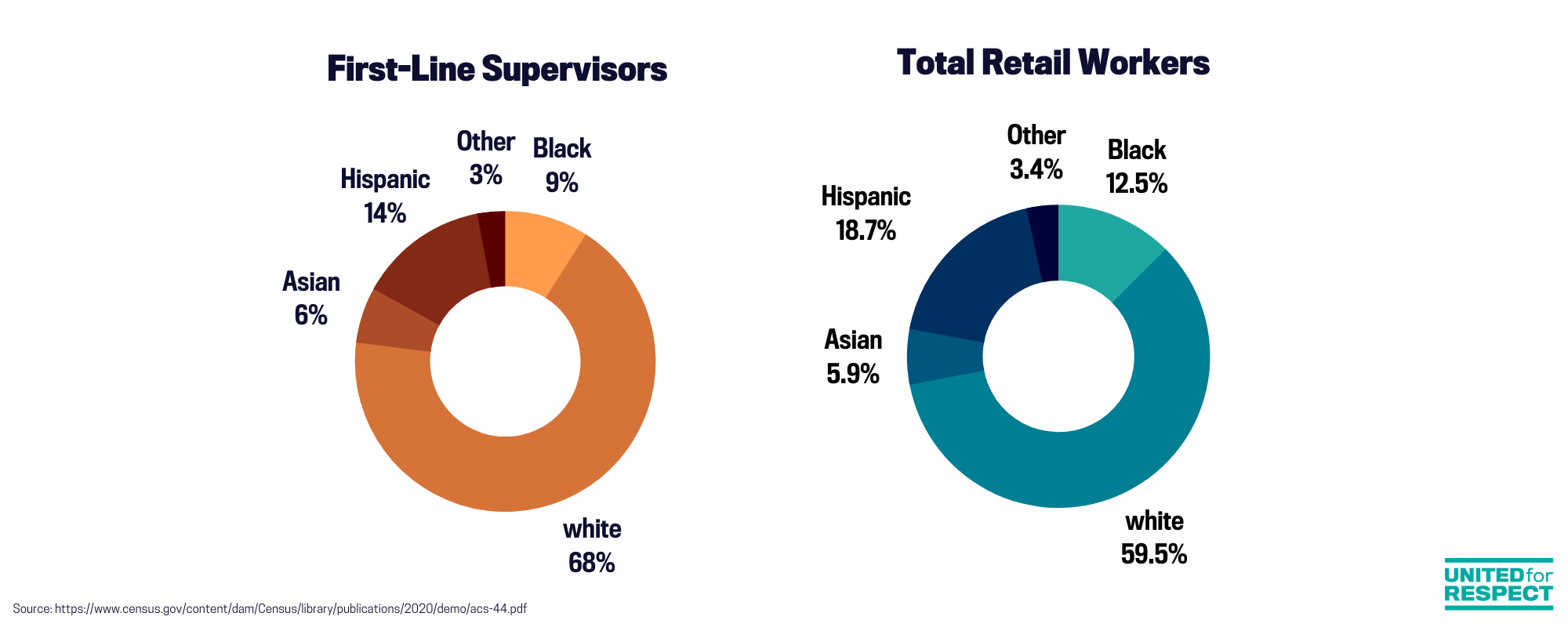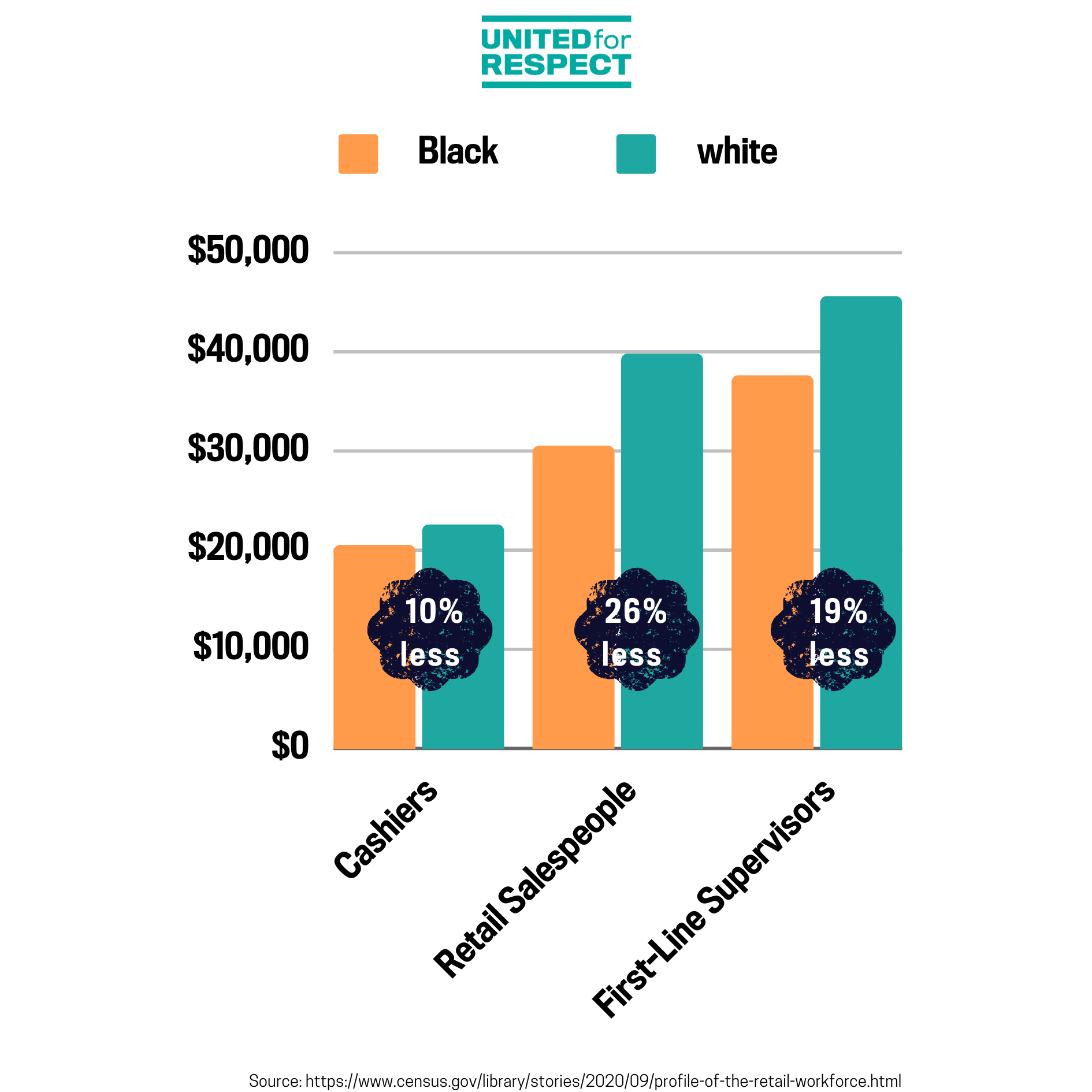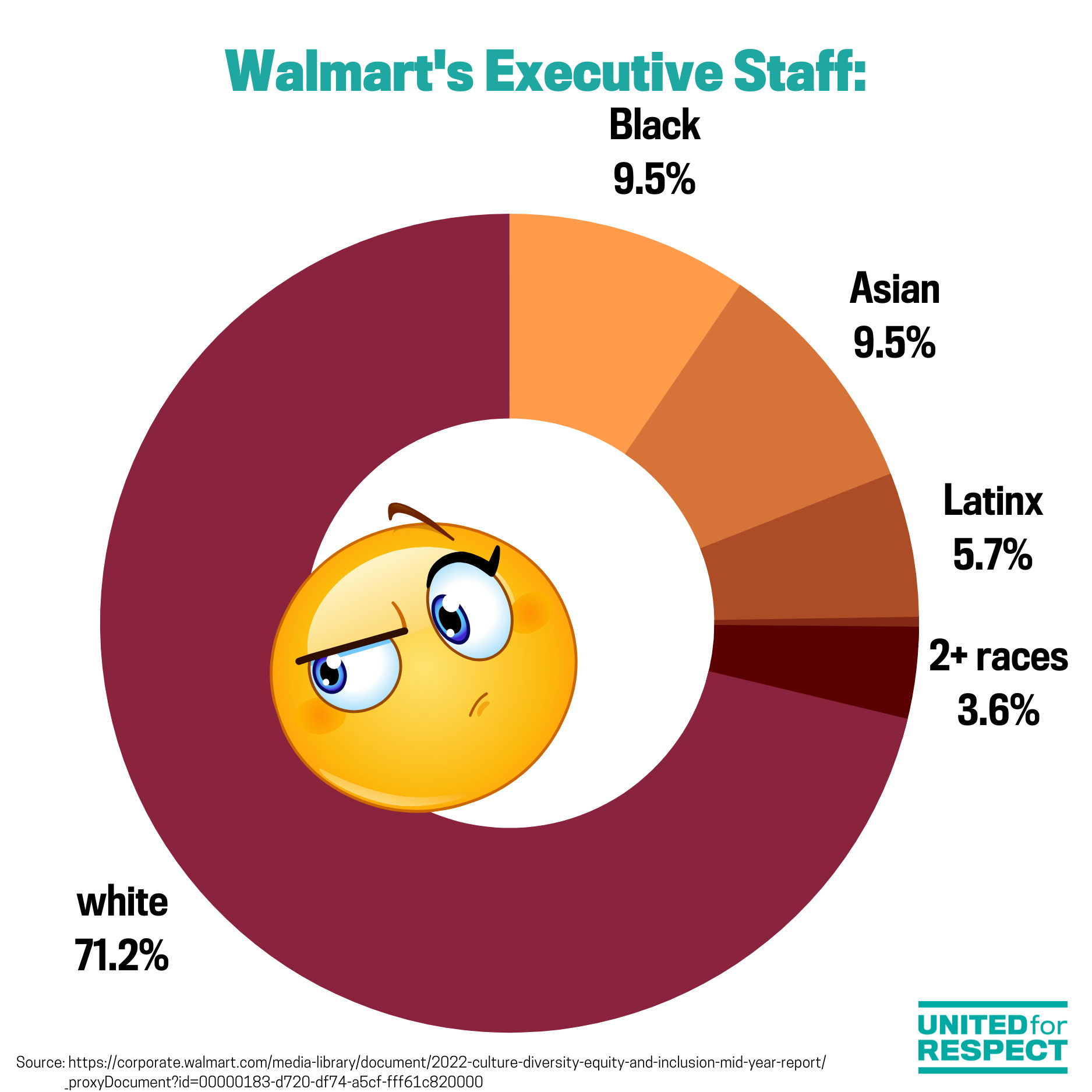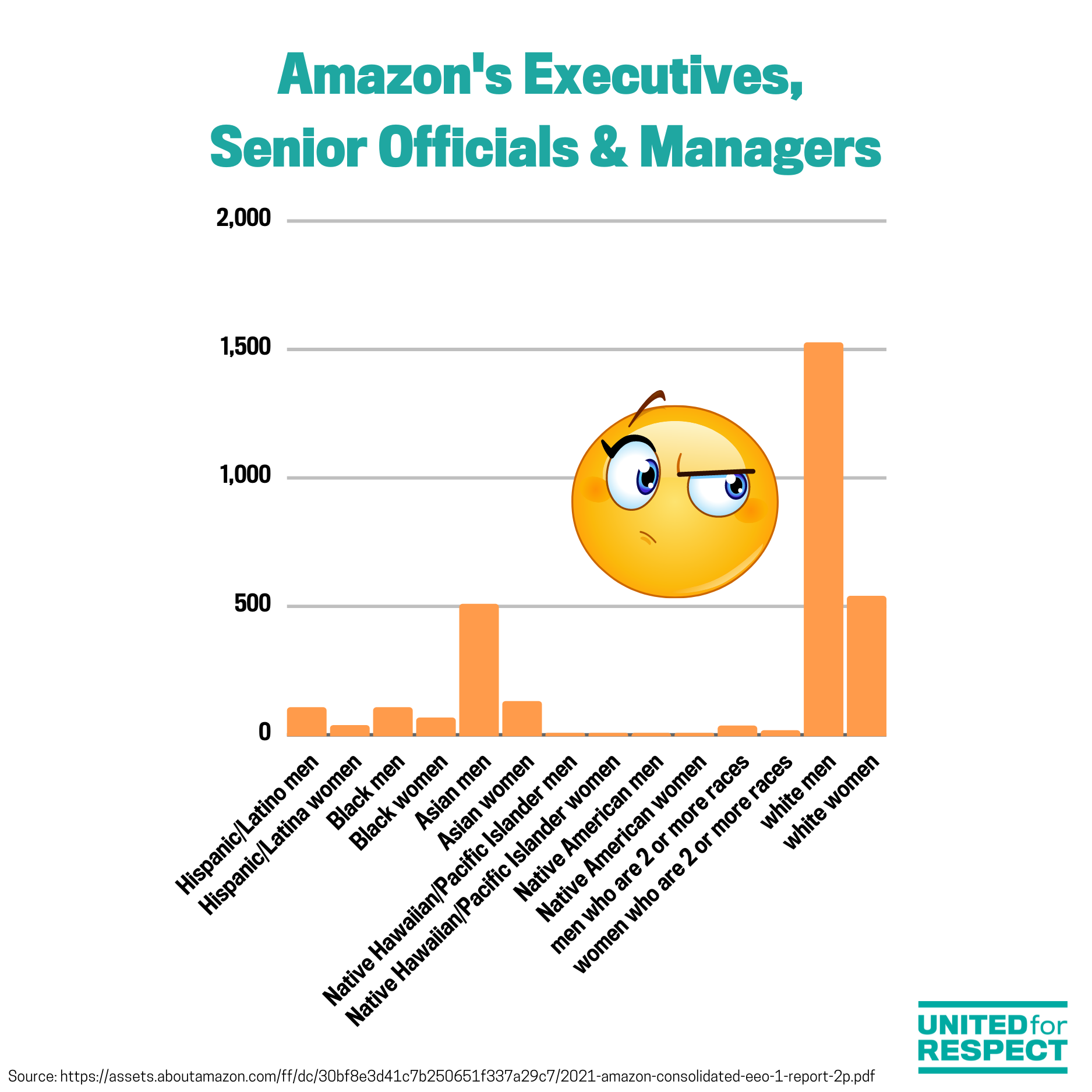How America’s Biggest Retail Corporations Perpetuate Inequity
The retail industry runs on Black labor – while underpaying and exploiting the Black workers powering its profits.
The roughly 2.1 million Black Americans who work in retail often get paid less, are scheduled for fewer hours, receive less in benefits, and have more unpredictable schedules than their non-Black counterparts. Black workers are over-represented in lower-paid roles like cashiers or warehouse associates, while under-represented in leadership and management positions – keeping Black voices out of the rooms where decisions about worker welfare are being made.
This is occupational segregation.
Black employees are denied sufficient opportunities to advance with experienced Black retail associates held back in positions with low pay and high turnover, and turned down when applying for managerial jobs.
Fewer than 1 out of every 10 first-line supervisors in retail are Black, but nearly 7 out of every 10 supervisors are white.

Black retail workers are overrepresented in low-paid positions like cashier and salesperson.
Retail’s racial wage gap helps to fuel socio-economic inequality.
- Black retail cashiers earn about $2,000 less than White workers in the same position.
- Black retail salespersons earn around $10,000 less than White retail salespersons.
- Black first-line supervisors earn nearly $8,000 less than their white counterparts.

Walmart’s Race Problem:
How the largest private sector employer exploits Black workers
Walmart is the largest private sector employer in the world with over two million associates globally and nearly 1.6 million workers based in the United States. Black associates are overrepresented on the floors of Walmart stores, making up 21.34% of their hourly U.S. workforce (compared to about 11-12% across the industry). For decades, the corporation – run by America’s richest family – has been scrutinized for exploiting Black workers through pay inequity, lack of managerial diversity, and meaningless virtue signaling.
- The few high ranking Black managers at Walmart declared they do not have equal access to career growth and opportunities and overall would not recommend working there.
- While making up over 20% of Walmart’s US workforce, Black employees only make up 12% of management while white workers make up almost 60% of Walmart’s management.
- The statistics are even more bleak for Walmart’s executive staff, with Black officers making up 9%, while white officers make up 71% of Walmart.

Amazon’s Race Problem:
How the #1 online retailer discriminates against Black employees
Amazon is the second largest U.S. employer and according to company data, over a quarter of its American workforce is Black. Yet Black employees at Amazon face the same discrimination, occupational segregation, and pay gaps common across the retail industry.
- Black workers at Amazon are over-represented in frontline positions, like Warehouse Associates, where they make up over 32% of workers.
- Meanwhile, Black employees at Amazon only make up 5.6% of Executives & Senior Managers, and only 12.7% of First & Middle Managers.
- Of Amazon’s top Executives & Senior Managers: 1,521 are white men, 106 are Black men and, and only 66 Black women.

Retail workers are fighting back!
Across the country, people who work in retail are organizing and demanding racial justice in the workplaces. At Walmart, workers have filed a shareholder resolution calling for a racial equity audit at the company. Meanwhile, Amazon workers are speaking up in support of a shareholder resolution asking Amazon to report on race and gender pay gaps. These workers understand that fighting racial injustice is essential to improving working conditions, pay, and benefits, not just for them, but for all workers.